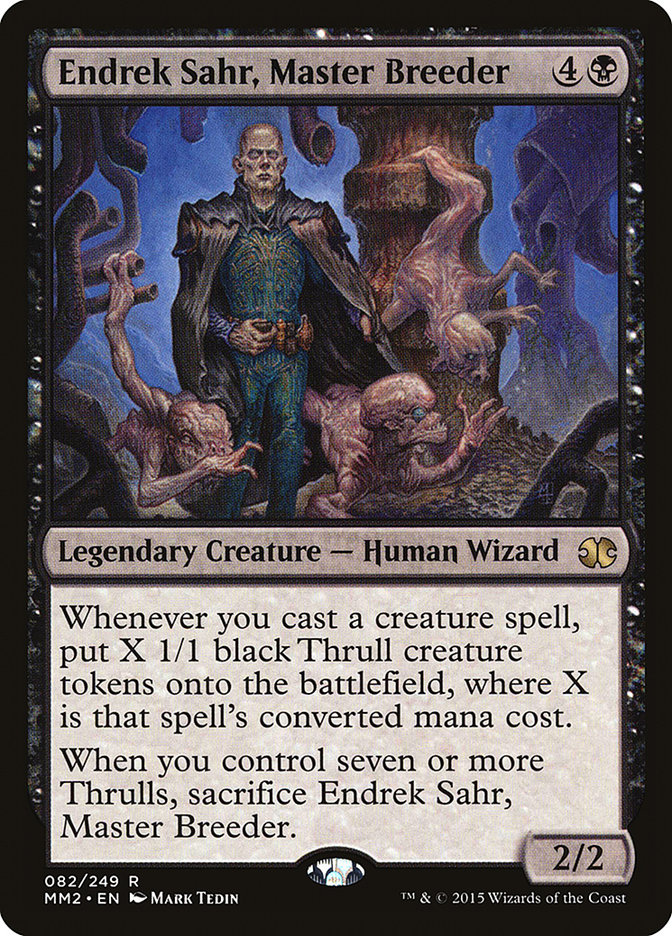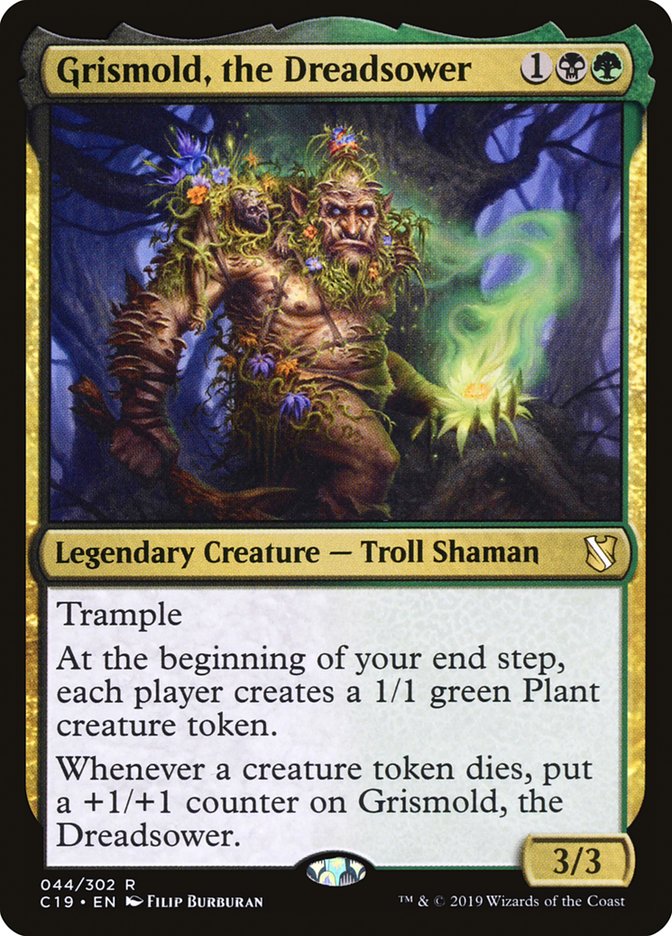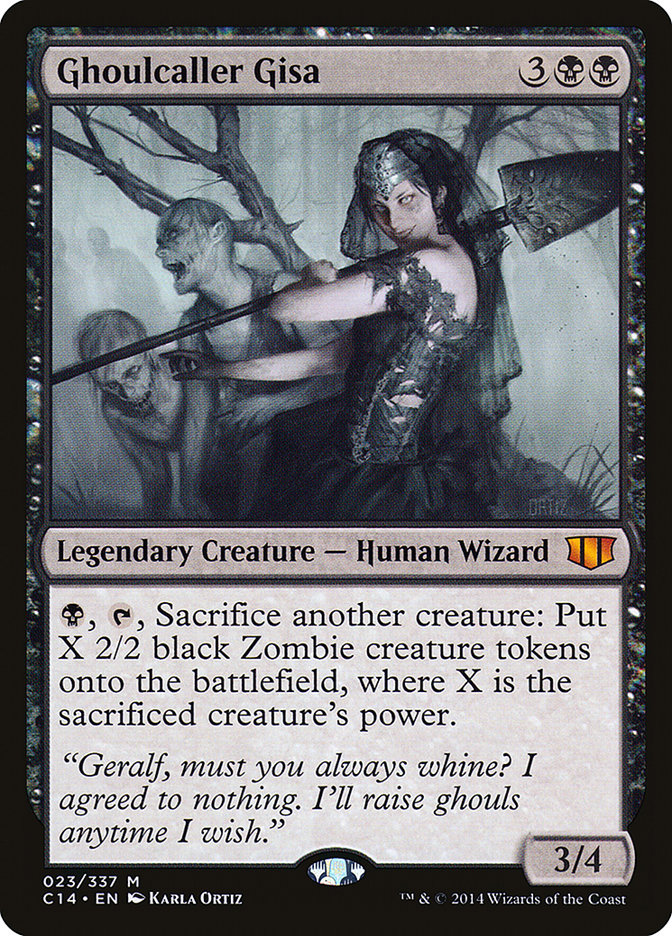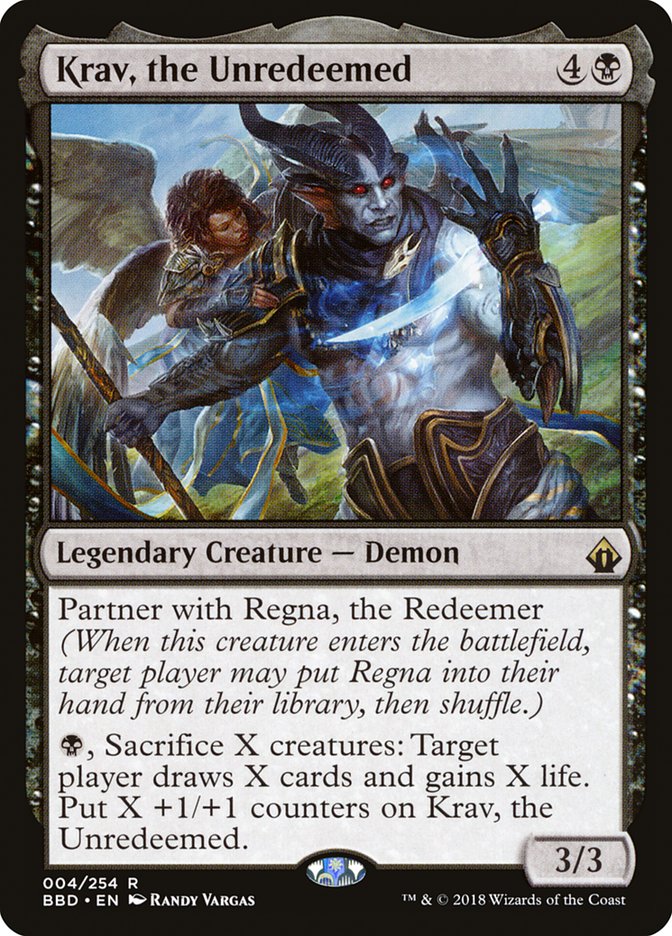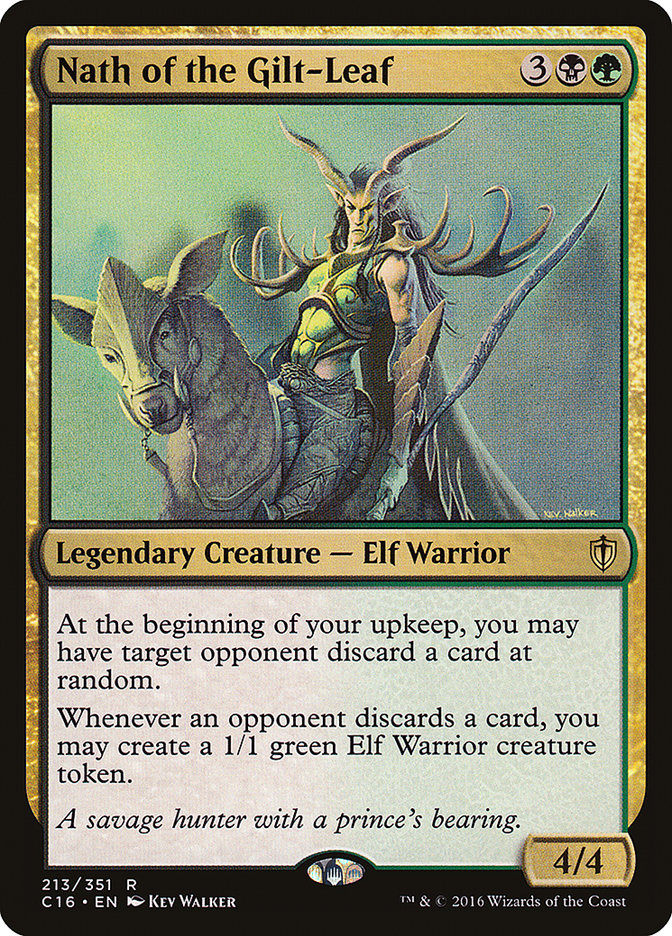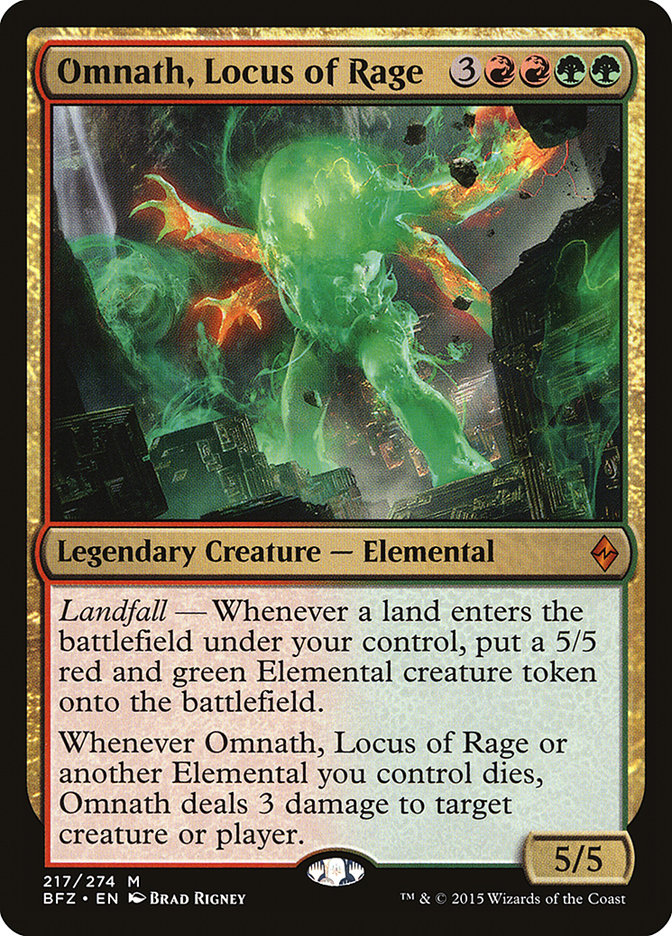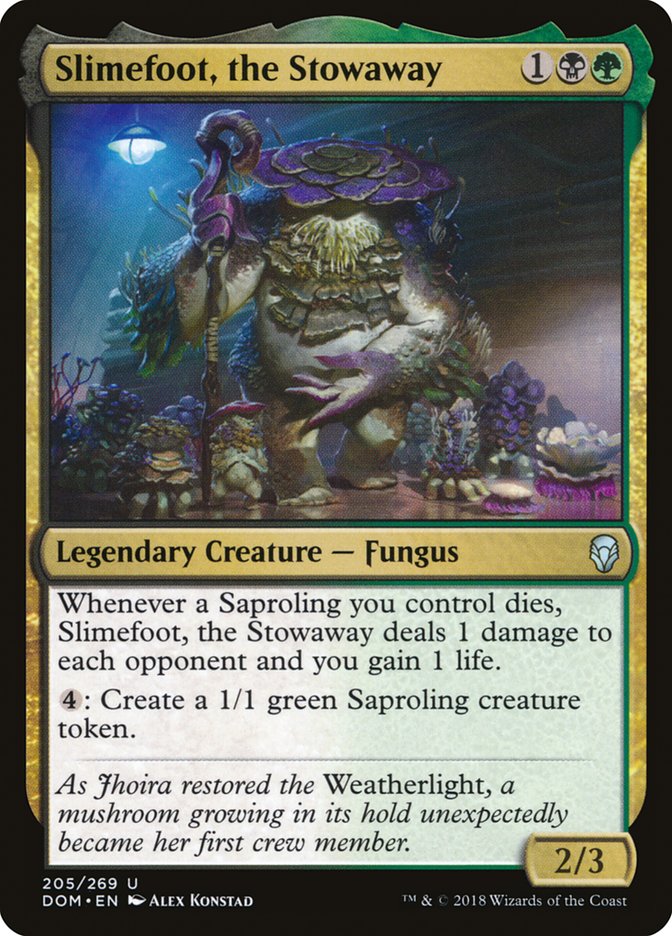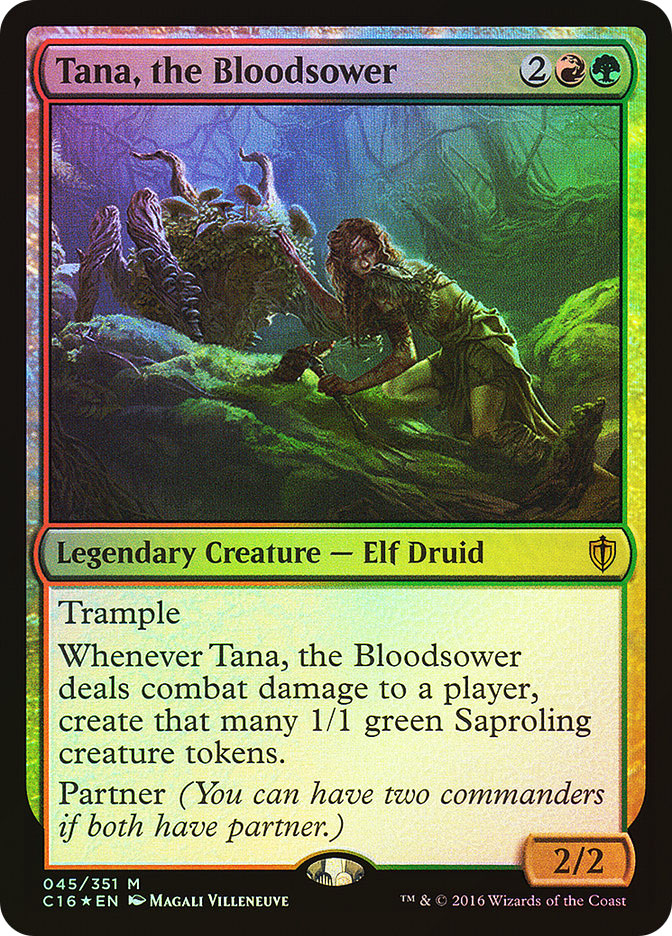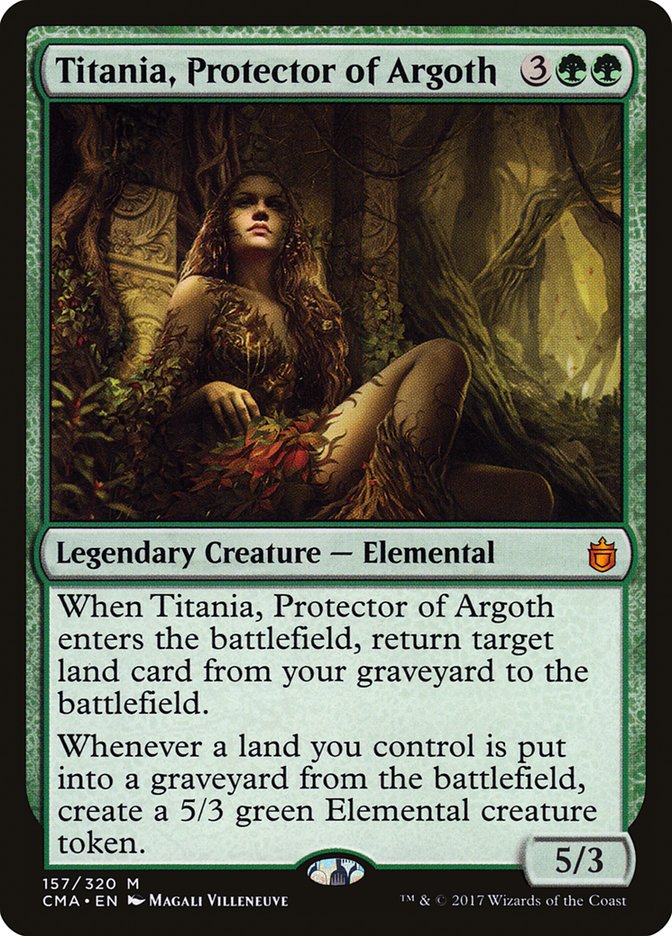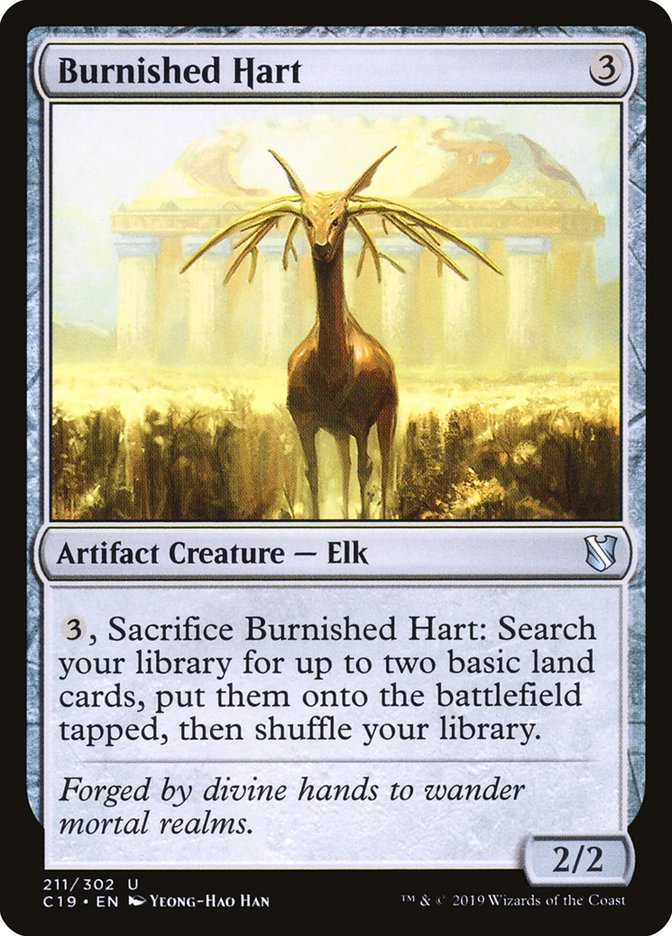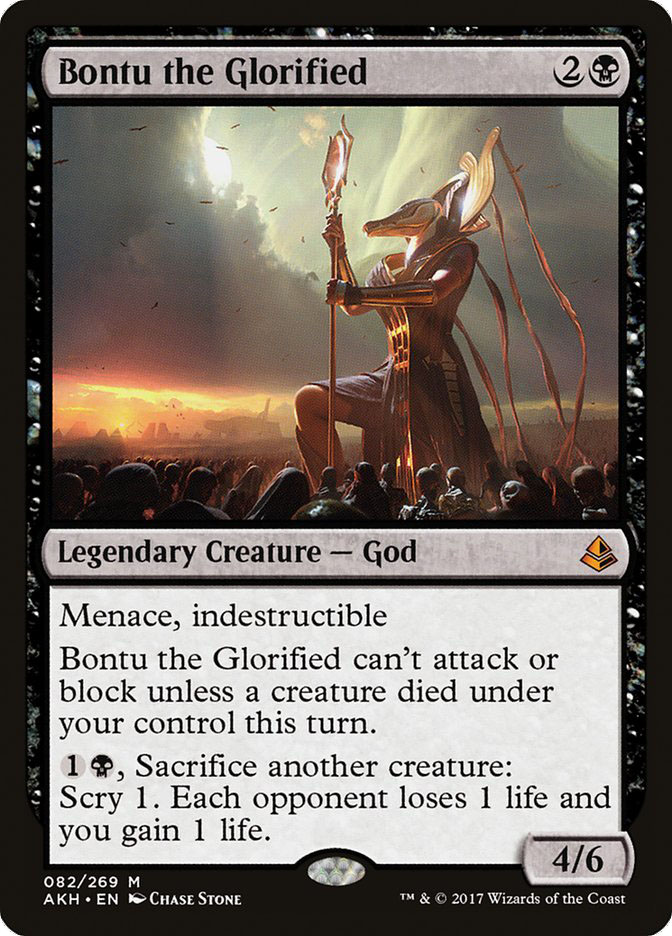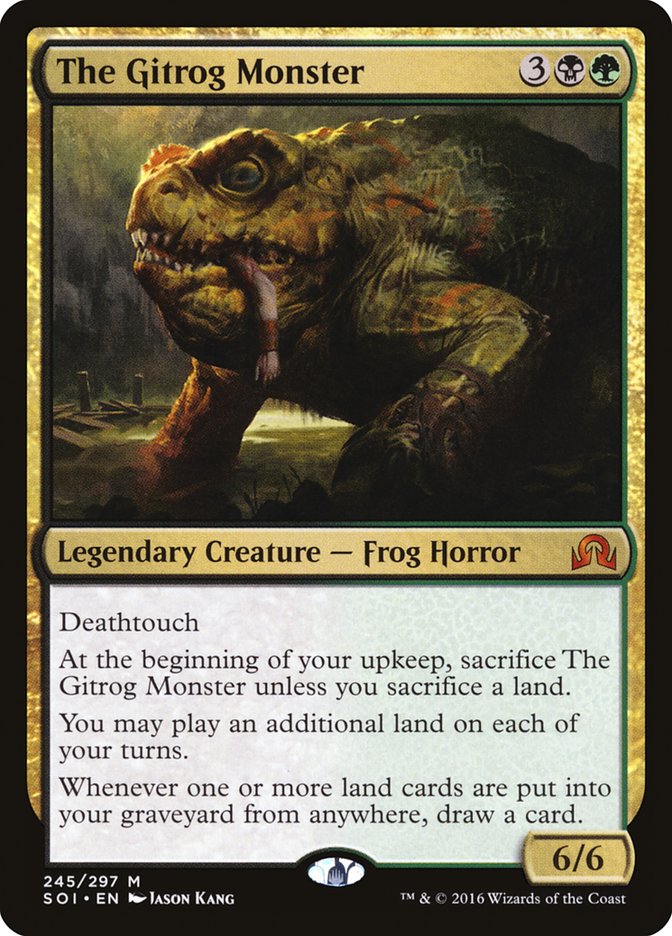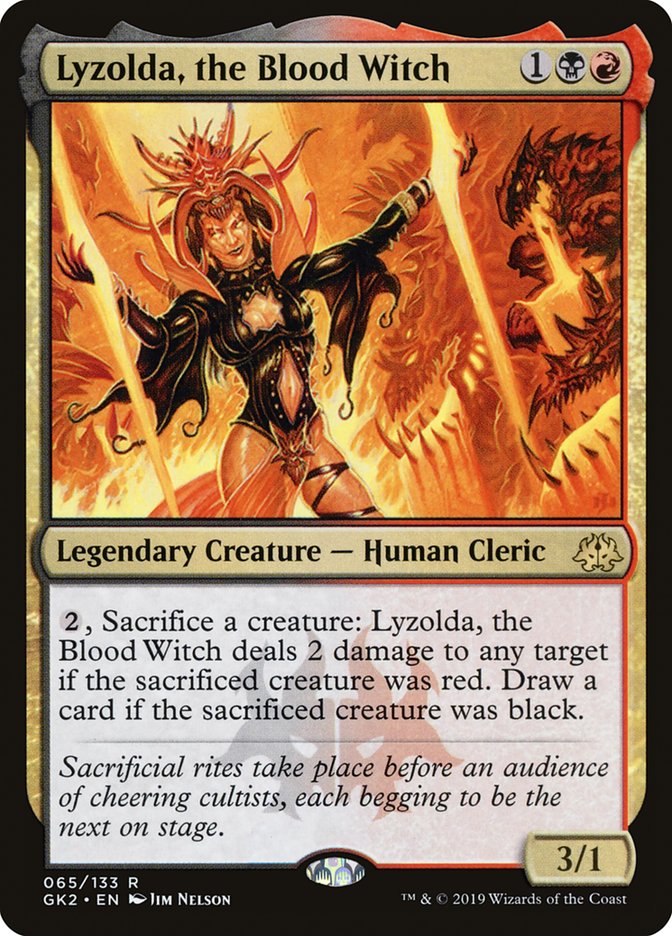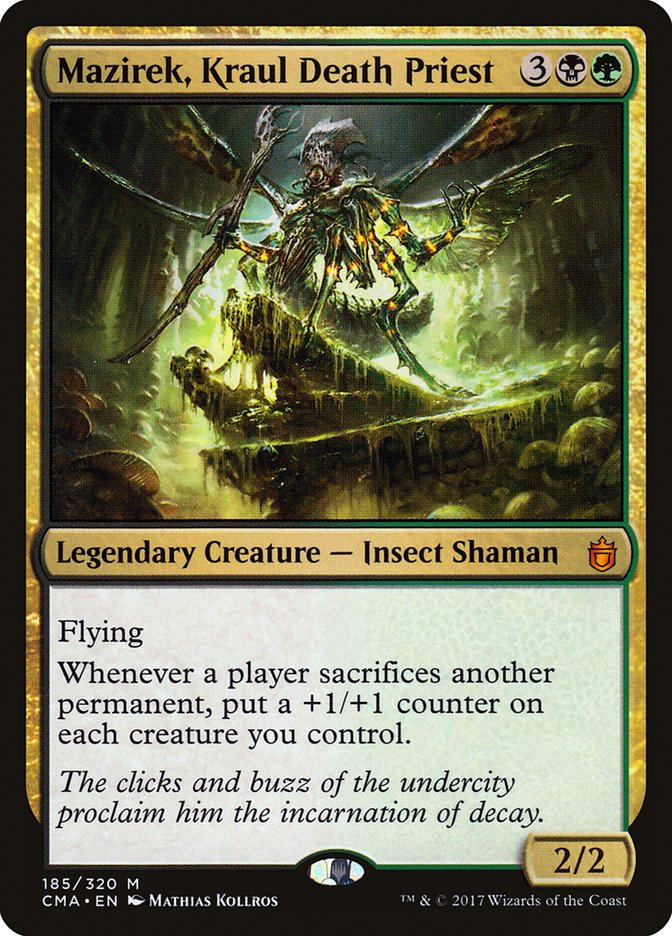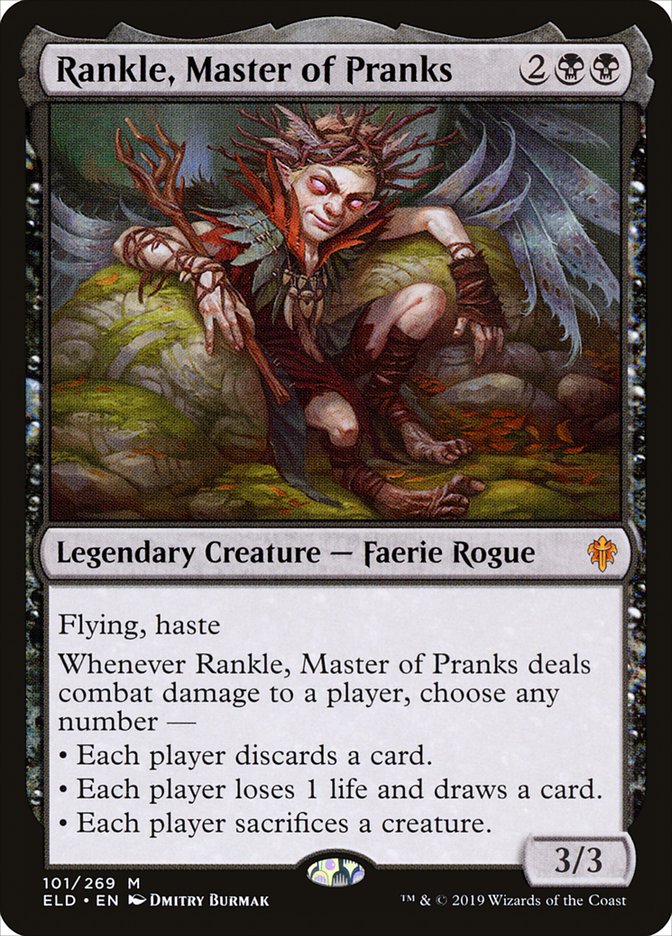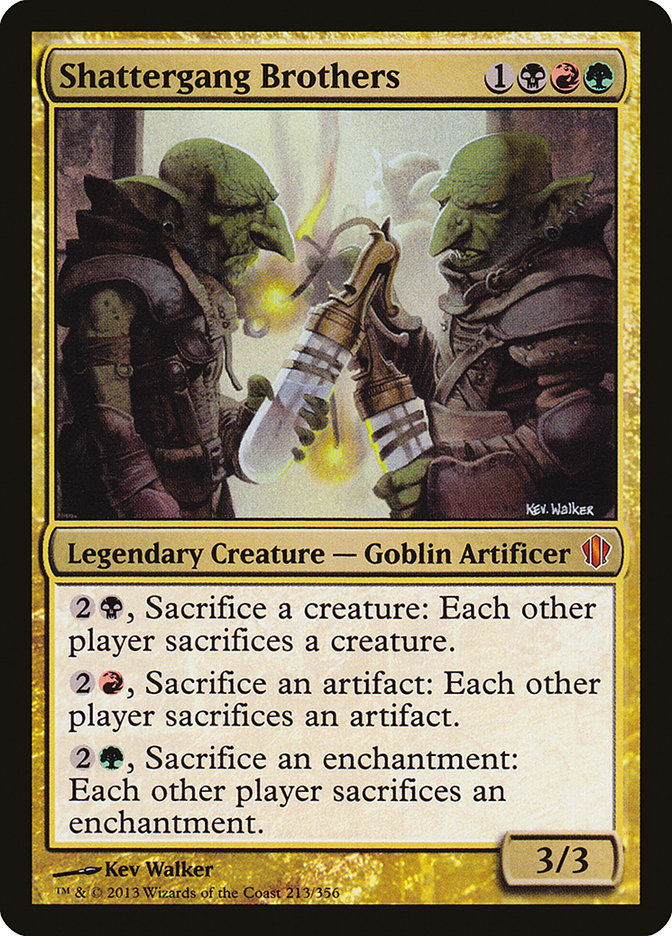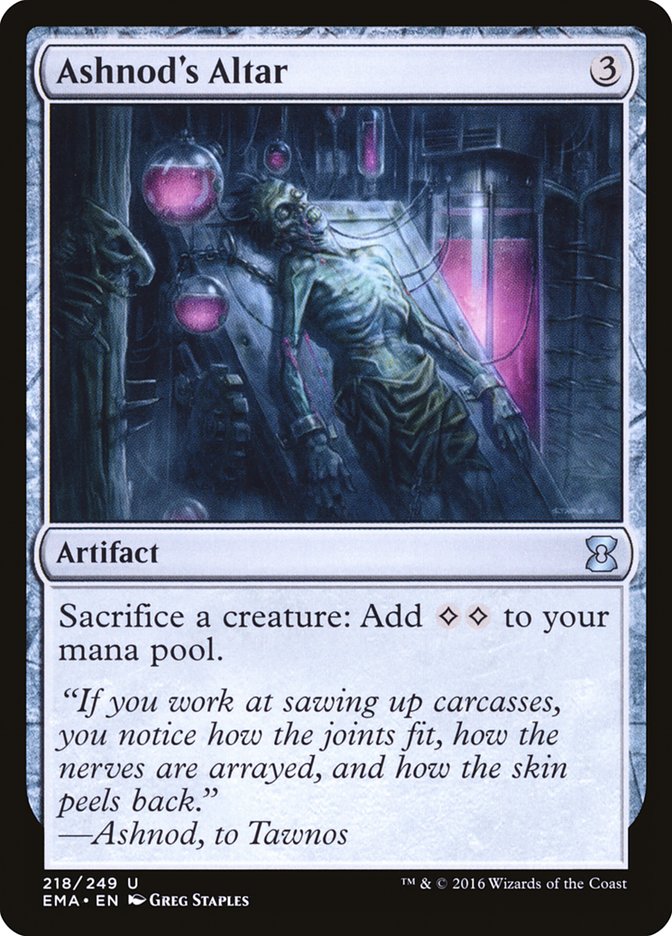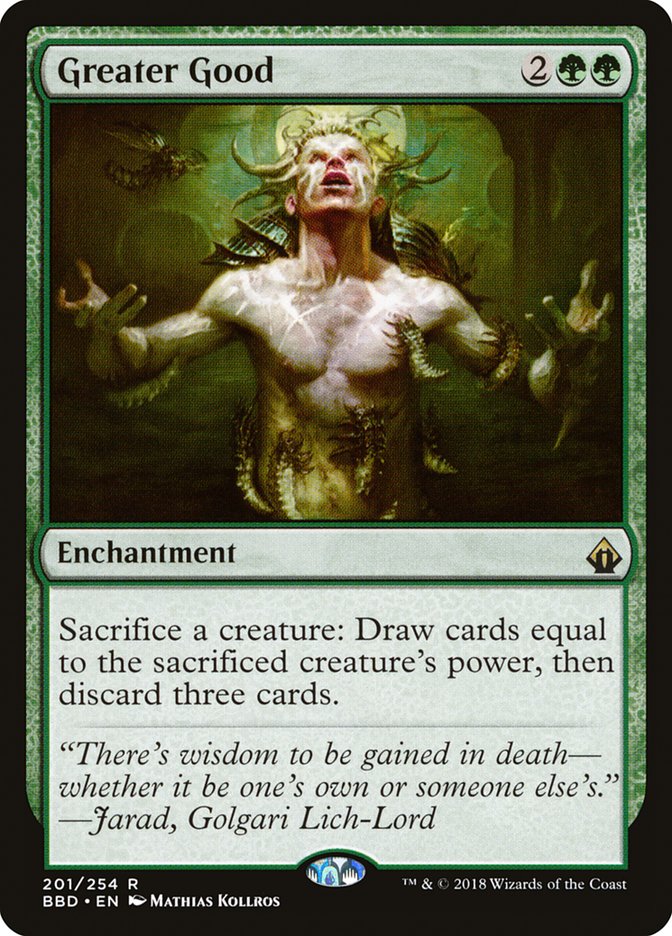Back when we were first treated to a preview of Korvold, Fae-Cursed King, I supposed transforming my sacrifice-heavy Thraximundar deck into a Korvold deck. While that has its charms, building Korvold from the ground up seems a great deal more interesting. Giving is a cool theme is even better.
I got onto the idea of building a legendary themed deck when I was scanning the list of Throne of Eldraine’s legendary permanents. A number of them spoke to me as being quite synergistic with each other. I started sketching. I set out to use as many of the Throne of Eldraine legendary creatures and other permanents as I could. Of course, Korvold wants meat and meter for his appetites, so at least a few of those legendary permanents would have to bring along friends (well, minions) to be fed to the boss. The result was a deck that revels in its own decadence. Here’s the list:
Creatures (37)
- 1 Azusa, Lost but Seeking
- 1 Solemn Simulacrum
- 1 Reki, the History of Kamigawa
- 1 Sekki, Seasons' Guide
- 1 Lyzolda, the Blood Witch
- 1 Sek'Kuar, Deathkeeper
- 1 Endrek Sahr, Master Breeder
- 1 Radha, Heir to Keld
- 1 Nath of the Gilt-Leaf
- 1 Kazuul, Tyrant of the Cliffs
- 1 Mikaeus, the Unhallowed
- 1 Burnished Hart
- 1 Prossh, Skyraider of Kher
- 1 Shattergang Brothers
- 1 Ghoulcaller Gisa
- 1 Titania, Protector of Argoth
- 1 Omnath, Locus of Rage
- 1 Mazirek, Kraul Death Priest
- 1 Kalitas, Traitor of Ghet
- 1 The Gitrog Monster
- 1 Tana, the Bloodsower
- 1 Bontu the Glorified
- 1 Grand Warlord Radha
- 1 Slimefoot, the Stowaway
- 1 Krav, the Unredeemed
- 1 Goreclaw, Terror of Qal Sisma
- 1 Ilharg, the Raze-Boar
- 1 God-Eternal Bontu
- 1 Grismold, the Dreadsower
- 1 Chainer, Nightmare Adept
- 1 Rankle, Master of Pranks
- 1 Syr Konrad, the Grim
- 1 Questing Beast
- 1 Ayara, First of Locthwain
- 1 Grumgully, the Generous
- 1 Yorvo, Lord of Garenbrig
- 1 Syr Faren, the Hengehammer
Lands (39)
- 1 Strip Mine
- 6 Forest
- 1 Wooded Foothills
- 1 Wasteland
- 6 Swamp
- 4 Mountain
- 1 Untaidake, the Cloud Keeper
- 1 Shizo, Death's Storehouse
- 1 Bloodstained Mire
- 1 Phyrexian Tower
- 1 High Market
- 1 Dust Bowl
- 1 Miren, the Moaning Well
- 1 Overgrown Tomb
- 1 Stomping Ground
- 1 Blood Crypt
- 1 Terramorphic Expanse
- 1 Jund Panorama
- 1 Verdant Catacombs
- 1 Evolving Wilds
- 1 Command Tower
- 1 Myriad Landscape
- 1 Blighted Woodland
- 1 Prismatic Vista
- 1 Lotus Field
- 1 Fabled Passage
Spells (25)
- 1 Goryo's Vengeance
- 1 Vampiric Tutor
- 1 Demonic Tutor
- 1 Rampant Growth
- 1 Time of Need
- 1 Tenza, Godo's Maul
- 1 Kodama's Reach
- 1 Worldly Tutor
- 1 Ashnod's Altar
- 1 Dragon Arch
- 1 Greater Good
- 1 Skyshroud Claim
- 1 Cultivate
- 1 Darksteel Plate
- 1 Champion's Helm
- 1 Heroes' Podium
- 1 Hero's Blade
- 1 Treasure Map
- 1 Blackblade Reforged
- 1 Helm of the Host
- 1 Mox Amber
- 1 Thran Temporal Gateway
- 1 The Mending of Dominaria
- 1 The Cauldron of Eternity
- 1 The Great Henge

This deck is certainly not going to kill anyone quickly, but you’ll find that it might well kill someone quite decisively. It’s a Tier 2 or 3 theme deck that will play well in a very Timmy-ish group or game. There might be an early-turn, perfect-hand-and-draw scenario in which it wrecks one player on Turn 6 or so, but it’s intended to be played in a less competitive environment. It’s more about exploring the theme than it is about winning the game. Wins will come, but simply be warned of its limitations.
Because of its lack of real early-turn viability, it’s one that I’m comfortable putting more tutors into than I’m normally comfortable with. There are no “end the game” cards to tutor for. Early-turn Vampiric Tutor and Demonic Tutor will simply grab some ramp. Worldly Tutor and Time of Need will get whichever of the 34 legendary creatures currently fit the current battlefield state.
The only nonlegendary creatures are ramp (Burnished Hart and Solemn Simulacrum) and card draw (Reki, the History of Kamigawa). I was excited for the opportunity for the latter to be included in a deck as a viable choice. It seems a little underplayed in an environment in which you know you’ll be casting at least one legendary spell. The knee in the curve for how many legendary spells (it’s not just creatures) you need to play to make it worthwhile is in double digits, so this deck clears the bar with plenty to spare.
As I was putting together a list of the legendary creatures, I noticed that most of them are non-Human, which made Grumgully, the Generous viable and certainly didn’t dissuade me from playing Mikaeus, the Unhallowed. Mikaeus is so good at the other parts of what it does, I often forget about the part that destroys Humans that damage me. If I were building a tighter version of the deck with not just legendary creatures, Grumgully would probably still make the cut. There are too many good interactions, especially with creatures that have persist, to ignore.
There are a number of creatures that bring friends for Korvold food in one fashion or another:
Endrek Sahr has admittedly been one of my favorite cards for a long time. When we cast spells, it makes tokens for free. We don’t want to have more than seven of them, so we can fire them willy-nilly into combat, even at unfavorable rates, since we’ll just make more. They’re perfect for sacrificing to Prossh, Skyraider of Kher; Ashnod’s Altar; Bontu the Glorified; and more. Even if we happen to get more than seven of them, we’ll sacrifice Endrek Sahr, which is another counter and card for/from Korvold.
Grismold doesn’t create as many as Endrek Sahr, but whenever tokens die, he gets larger. In Commander games inside the building, I’ve already seen how dangerous he can get in relatively short order. This is a no-kidding card when combined with liberal token creation and letting them die. He’s certainly a nice companion to Endrek Sahr.
Sometimes, a creature has to go. Whether it’s for a small benefit like Solemn Simulacrum drawing a card or Yorvo, Lord of Garenbrig that’s gotten big but doesn’t have evasion, we can turn a tall offense into a wide one pretty quickly. The sacrifice feeds Korvold while creating even more fodder for his feasts.
Other players love their graveyards just as much as we do. Taking those graveyards away (at least the creatures) while making some Zombies is a turnaround of the first order. It also serves as a sacrifice outlet to feed Korvold’s appetites.
Our opponents can attack us all they want, but if they’re not paying mana, we’re getting creatures. Red isn’t great about having rattlesnakes, but Kazuul is one of them. The fact that they’re 3/3s means that they’re not just for growing Korvold, but for getting into the Red Zone themselves. The deck has enough large creatures that if someone wants to attack us, they’re going to have to go wide, which plays right into Kazuul’s beefy hands.
Another chewer of the Endrek Sahr Thrulls, Krav gets us cards and life as well, for the low cost of one mana—and it doesn’t even tap to do it. Krav will get pretty large pretty quickly by its lonesome.
The triggered ability isn’t the only time we’ll be getting tokens out of Nath. We don’t even need to force the issue. There’s plenty of discarding going on in Commander games, from looting to rummaging to simply going down to maximum hand size because someone didn’t draw their Reliquary Tower in time.
Built around as the commander of a deck, this version of Omnath can be quite frightening and quickly determine the pace of a game. Like with Nath, however, we don’t even need to build around it in order to get an advantage, since we’re still going to be playing lands anyway. The deck has enough lands that sacrifice to get other lands (which Korvold finds tasty) that we’ll frequently get a double bonus with Omnath. There are all kinds of tomfoolery to be had with all the cards we’ll be drawing and having Azusa, Lost but Seeking on the battlefield as well. The Mending of Dominaria also plays into this narrative, but potentially putting several lands back onto the battlefield at once—especially if The Gitrog Monster has been running around for any length of time.
One of the most deadly and dangerous commanders, Prossh brings its own method of destruction with it. In this deck, we’re obviously only going to get six mana worth of tokens out of it (so be sure not to put it onto the battlefield in some other fashion, like Thran Temporal Gateway) since we’re not paying commander tax on it, but that doesn’t make it any less lethal. Prossh is also a convenient outlet to sacrifice Endrek Sahr’s Thrull tokens to in order to safely make more. There might be times when we don’t have out Korvold, and Prossh is our path to victory. It might take more than just 21 (commander damage), but everyone’s favorite Skyraider is up to the task. And then some.
What’s neat about Sekki, Seasons’ Guide is that we get a number of Spirits equal to the damage it took, not just the number of counters on it. Sure, it’ll go to the graveyard, but we’ll either have enough to bring it back from the graveyard (making Korvold pretty close to lethal), or just a bunch of stuff for one of the other outlets.
Slimefoot brings friends the old-fashioned way, paying mana to make them. It’s considerably slower, but it also does a little extra when they get sacrificed. Tana, the Bloodsower is the only other creature to make the Saprolings which trigger Slimefoot, making me at least consider Verdeloth the Ancient; Ulasht, the Hate Seed; and Nemata, Grove Guardian. In the end, there wasn’t enough reason to go too far down the Saproling line without upending a number of the other synergies to play around with.
I’m looking forward to having a number of the other superstars in the deck on the battlefield at the same time as Tana and Heroes’ Podium. She suddenly goes from being a not particularly scary 2/2 to a must-be-blocked force of nature.
By the time we cast Titania, there should be at least one land in the graveyard, either a fetchland or Evolving Wilds / Terramorphic Expanse. She can bring that back so that we might create a few more Elementals, perhaps at the same time that Omnath, Locus of Rage is running around.
Of course, what makes Korvold tick are the sacrifice outlets, like the aforementioned Ghoulcaller Gisa; Kalitas, Traitor of Ghet; and Krav, the Unredeemed. There are others.
We tend to want to see Burnished Hart early as part of our ramp package, but with Korvold, getting it in the late-game isn’t terrible. Of course, by then we’ll probably have a more efficient sacrifice outlet—but we might also have an Omnath to trigger.
Bontu does double duty, sacrificing for Korvold’s profit while also providing some slow life drain. There are going to be times it can’t attack or block, but it’s a different kind of offensive weapon anyway.
Delicious, delicious lands for both Gitrog and its master, this is one of those cards that will go onto a future version of the Can’t Get Angry (when someone blows it up) list.
Lyzolda will mostly be sacrificing black creature tokens, which draws cards, as there aren’t that many red creatures in the deck (unless someone lets us get out of hand with Kazuul).
Mazirek doesn’t provide sacrificial services itself, but its triggered ability deserves mention here because it grows the team in leaps and bounds, effectively doubling the counters we’ll be putting onto Korvold. Note that when anyone sacrifices a creature Mazirek triggers, so we might root for an opponent to play Ghave, Guru of Spores. Also plays well with our Sekki, Seasons’ Guide.
Also playing into Nath of the Gilt-Leaf, Rankle is just the yappy dog constantly biting at our opponents’ heels. There will be times when it gets through simply because our opponents have bigger concerns.
Often a card in search of a good home, Shattergang Brothers finds one with Korvold. It’s mostly there to sacrifice creatures to, creating the cascade of Korvold counters, but in a pinch it can take out one of the artifacts for value.
When we make a bunch of small token creatures, it’s nice to have something to do with them, to include fueling our giant spells with them. Ashnod’s Altar sets up potentially lethal one-shot situations with Korvold, and some easy two-shots.
It’s not called Bene Supremo in Italian for nothing. It’s both card draw and Korvold fuel, and it will help with The Cauldron of Eternity. Sure, the creature we sacrifice will go to the bottom of the library, but the cards we discard will be there in the graveyard to reanimate.
The last bit I’ll mention involves the legendary-matters artifacts, such as Champion’s Helm; Blackblade Reforged; Dragon Arch (since most of the legends are multicolored); Helm of the Host; Hero’s Blade; Heroes’ Podium; Tenza, Godo’s Maul; and Thran Temporal Gateway. They either make it easier to get legendary permanents onto the battlefield or to make the creatures that are the focus of the deck far deadlier.
Myths and Legends of Korvold is the kind of deck which can only exist and function in Commander—slave to a theme, and still eminently playable. Korvold is hungry, and he’s coming for you.
Sheldon Menery Deck Database
Check out our comprehensive Deck List Database! Click each section for lists of all my decks.
Signature Decks
These are the decks that define my personal play style to the greatest degree and to some extent lay the original foundation of the format. They’re also the ones you’re most likely to see me bringing along to spell-sling at an event.
The Chromatic Project
The Chromatic Project started as an effort to build at least one deck of all 27 possible color combinations, which was expanded to 32 when we finally got four color commanders. There’s more than one of some combinations, mostly because I have a Temur problem, plus some partner combinations are too enticing to pass up.
Mono-Color
Guilds
Shards and Wedges
Four Color
Five-Color
Partners
The Do-Over Project
The Do-Over Project is the next step after the Chromatic—building a deck with each of the same Commanders, but not repeating any cards save for basic lands (props to Abe Sargent “Next 99” idea). The Do-Over Project is still ongoing because we keep getting saucy new sets with creative and colorful commanders to build new decks with.
If you’d like to follow the adventures of my Monday Night RPG group (in a campaign that’s been alive since 1987) which is just beginning the saga The Lost Cities of Nevinor, ask for an invitation to the Facebook group “Sheldon Menery Monday Night Gamers.”


